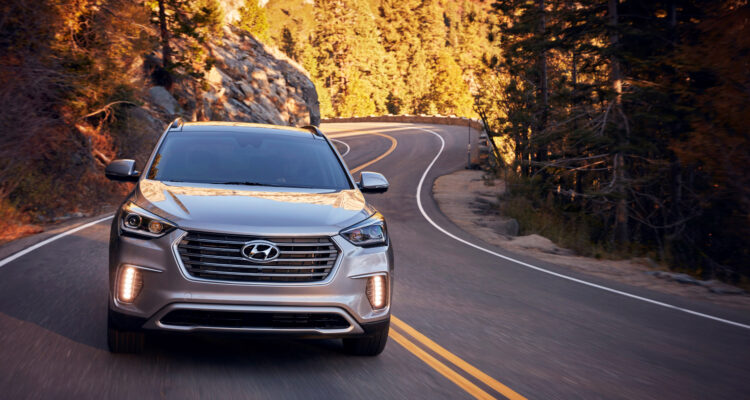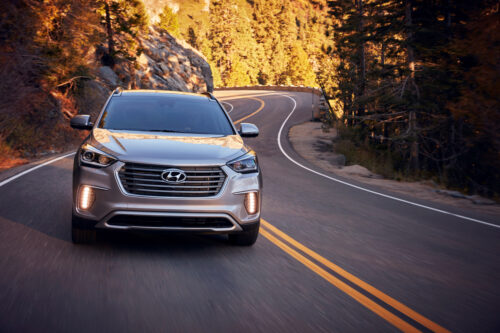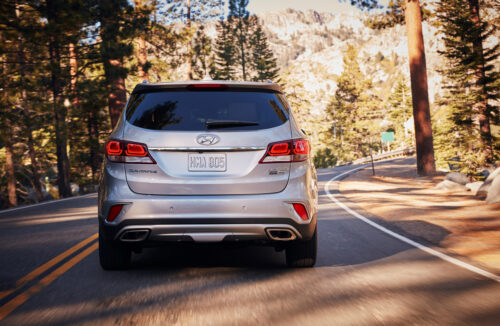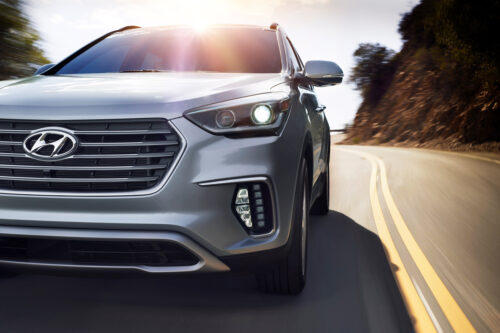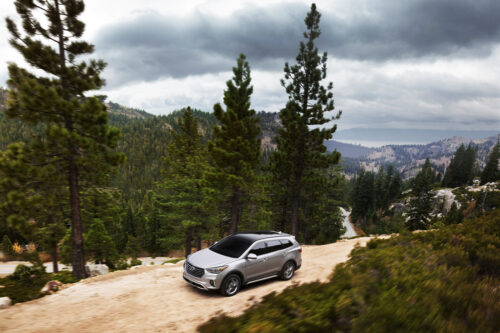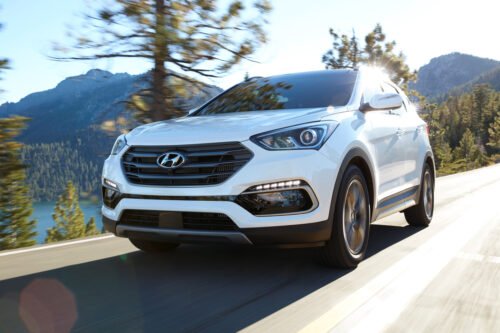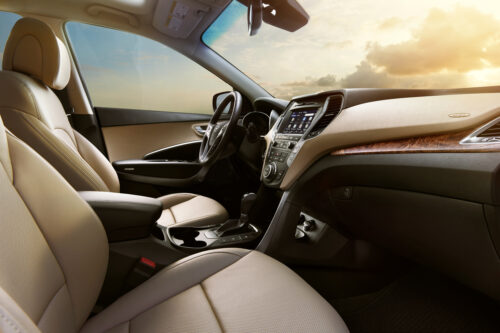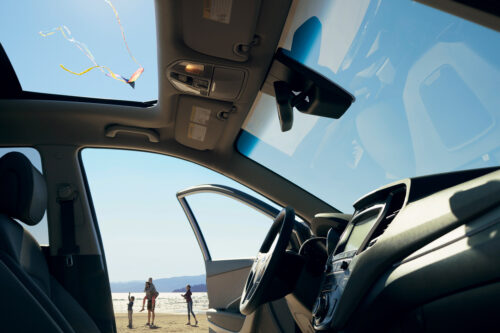The story of the Little Korean Car Company that Could is over. It could, it did and now it’s no longer little.
With the launch of its new luxury brand — Genesis — and the current quality levels of such mainstays as Santa Fe, Sonata and Tucson, Hyundai has been wearing the big-boy pants for a number of years now.
So it should come as little surprise reviews of the Santa Fe, now in the fourth year of its current generation, would be so positive. If your image of Hyundai involves a rusted-out Stellar, it’s time to update your mental library.
That being said, is success its own worst enemy? Not to Hyundai, which will gladly sell every vehicle it can, but to those who demand something just a little different.
Fluidic Sculpture 2.0 isn’t as distinctive as the original, with its swoopy lines and unique shapes, but it might be just what Hyundai needed to take the next step in sales. Design in automobiles is a fickle thing: too bland and you’re boring, too distinctive and you’re Saab. And we all know how Saab turned out.
The styling of the Santa Fe incorporates hints of the Fluidic Sculpture of old, but tamed down, perhaps a bit too much towards homogeny. Inside, however, is a different story. The design is attractive, distinctive and functional.
Seats are comfortable, controls well-placed and easy to use, even with gloves. Heated seats are standard and a heated steering wheel arrives early on the gradewalk, so getting a good winter vehicle doesn’t necessarily mean topping out on price.
It comes with two engine choices, two drivetrain layouts and one transmission, a six-speed automatic. The tester was a 2.4-litre, all-wheel-drive Premium model, with a cash price of $30,217.
For added punch — I found the 2.4 a little pokey — there’s a 2.0-litre turbo, starting at $37,299.
A front-drive model is also available, but only with the 2.4. It should be noted a front-drive SUV with winter tires is a better choice than all-wheel drive and all-season tires. All-wheel-drive doesn’t help with the most important parts of winter driving: stopping and steering.
For a killer winter-driver combination, all-wheel and winter tires would be choice. Anyone in a winter environment should be using winter tires, or all-weather (distinct from all-season) tires anyway, regardless how many wheels are driven.
Driving the Santa Fe is a pleasure; steering is crisp and smooth and handling is excellent despite being a taller SUV. There’s plenty of room for all five possible occupants, and there’s excellent vision.
If Hyundai wanted to knock it out of the park on the interior, there’s one change I’d recommend: make the steering wheel a bit grippier. The Premium had a leather wrapped steering wheel, which was heated, but the diameter of the rim was a touch on the small side. I’d suggest making it thicker, and perhaps perforating the leather at 9 and 3 to improve grip. The size and the surface made it a little slippy.
The top of the line is the 2.0 Ultimate, with the 2.0-litre turbo, adaptive cruise control, autonomous emergency braking with pedestrian detection, multi-view camera system and lane-departure warning. Its price is $44,599.
You know the commercial where the consumer is suffering identity theft, is warned by his identity theft-monitoring company about the theft and pleads with the guy to do something but is told, “We’re just a monitor. We just warn you when your identity is being stolen. Your identity has been stolen.”?
It’s getting to be like that with lane-departure warning. Enough cars will now input steering or brakes to get you back in the lane that a simple warning system seems so 2014. It will be interesting to see the options on the next-generation Santa Fe.
It’s important to point out at this point $45k can buy you a topped-out Santa Fe, or it can buy you a well-equipped but base model Mercedes-Benz GLC. Just sayin’.
Here’s one thing I noticed, and it’s obvious driving on slippery roads: there’s feedback in the steering wheel! Key to this is the mounting position of the electric power assist motor, which is on the steering rack instead of the steering column. It means you still get assist, but it’s not filtering out feedback of what’s happening with the front wheels the way a column-mounted motor does. There’s very little video-game feel here.
The thing about the latest Santa Fe is this: it may not be the most distinctive small SUV on the market, but there’s a lot to recommend. It’s comfortable, spacious and has an excellent interior.
2017 Hyundai Santa Fe Sport
Engine: 2.4-litre DOHC direct-injection four-cylinder
Power: 185 hp @ 6,000 rpm
Torque: 178 lb-ft. @ 4,000 rpm
Transmission: six-speed automatic
Brakes: four-wheel discs
Steering: rack-mounted electric rack-and-pinion
Suspension: MacPherson strut (front); multi-link (rear)
Fuel economy (l/100 km, city/highway/combined): 11.1/8.6/10.0 (FWD); 12.0/9.1/10.7 (AWD)
Price: $28,599 to $44,599, base MSRP
Related links:
Hyundai Canada
Double Clutch



